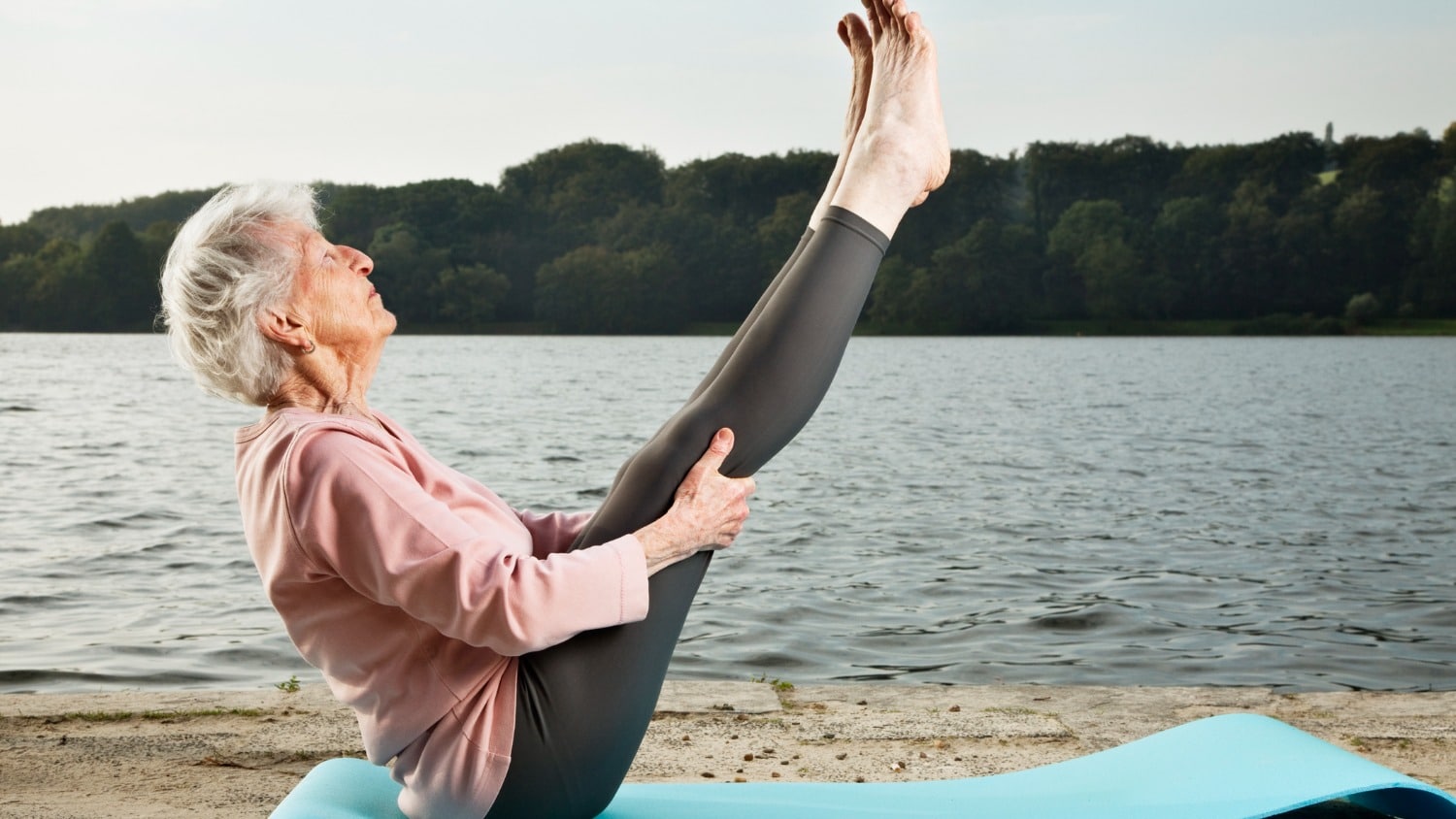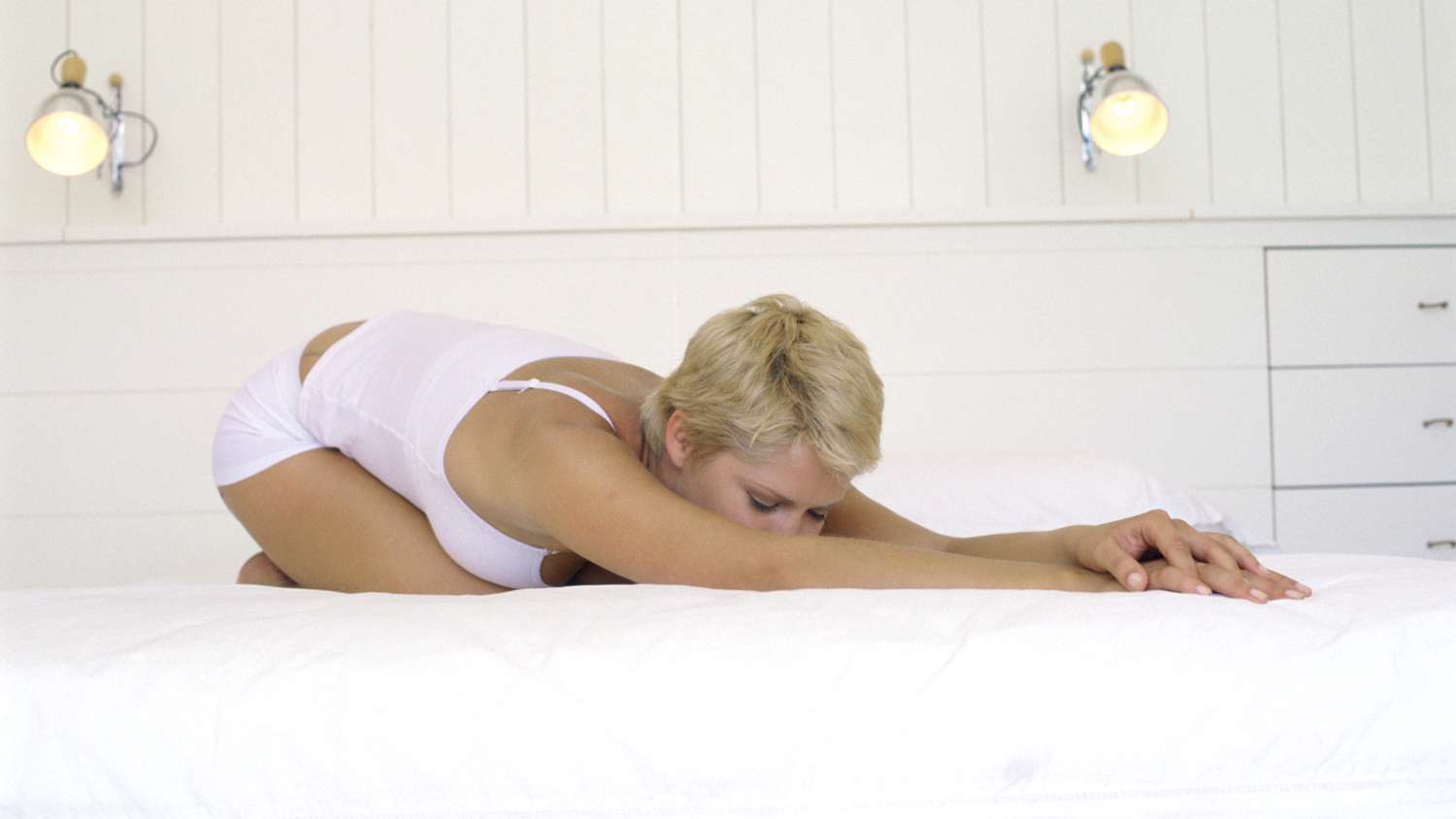
Yoga’s Not What It Used to Be
There are two yoga books on my shelf, both with the number 50 in the title. One was a 50th birthday present from my sister, and the other was co-written by one of my favorite yoga teachers, Desiree Rumbaugh. Glancing at my bookshelf, you’d be inclined to think that 50 is the age at which a woman can expect her yoga practice to fade or to morph. I think that’s the wrong number.
In the Beginning, I Wanted to Dance
As a little girl, I nagged my mother for dance lessons, and she finally sent me to a Russian named Krasnow who hit my leg with a big stick when I missed a position or a beat. I’ve since learned that was common practice among Russian ballet masters. In junior high, I studied with an American ballet teacher and learned to do a cartwheel, not exactly classical. In college, I took modern dance lessons because they were free.
Then, while working at my first job in San Francisco, I took jazz lessons from a man who had a performing troupe. He invited me to join the chorus – the highlight of my dancing career! – but I had other aspirations at the time. During the next phase of my working life, I switched to a different physical discipline altogether: downhill skiing, which was totally exhilarating and highly impractical.
Enter a New Thought
One day at work, I came across a book by a British former dancer who declared that yoga was better than any dance style or sport she’d tried, and she’d tried them all. For some unknown reason, I photocopied the entire book and tucked it away.
Fast forward a few decades, punctuated by motherhood and a stint in Little League, to a new job in a new city. A colleague told me about a yoga studio she had discovered. Yoga, huh? I dug out the fading photocopy, re-read it, and decided to give yoga a whirl.
I was 52. I soon discovered that the British ex-dancer was right, yoga had it all: rigor, beauty, body wisdom, and transcendence. The people at the yoga studio were sympathetic for the most part, and I launched into the pursuit of mastery.
Becoming a Yogi
At age 56, I enrolled in a 200-hour yoga teacher training program – not to teach, just to go deeper – led by a husband-and-wife team who were opposites. A former Buddhist nun, she was flexible and emotional. He was a stiff former engineer who lectured about the structure of the human body. They were both great teachers, in their different ways. I learned a lesson just watching them: there is no ideal yoga, there’s only one’s own yoga. So, I went about searching for mine.
Over the years, when gurus came to town, I took their seminars and learned about their philosophies and techniques. I was willing, and for the most part able, to try Ayurvedic medicine and 40 sun salutations in a row to see what benefits they might bring. At age 65, the world of yoga felt like a banquet, with me joyously sampling the fare.
Tempus Fugit
Fast forward another decade, and my, oh, my, how things have changed. Just as I no longer eat all the dishes at a culinary banquet, choosing carefully to avoid allergies and too much spice, my participation in the yoga banquet is now limited in ways I couldn’t have imagined at age 50. And it’s not a question of strength.
You know how unsymmetrical our bodies are? My right shoulder has always been slightly lower and more forwardly rotated than my left. When I was younger, I could muscle that shoulder into a place that let me lean on my forearms and lift my body off the floor. But after thousands of repetitions, my shoulders have become more asymmetric than ever. Now when I try to take that pose (Pincha Mayurasana, meaning a peacock spreading its tail), it hurts too much to proceed.
Pain Is the Best Teacher
My hips and pelvis now twist unevenly, too, perhaps because my shoulders have influenced them (everything is connected). Perhaps it’s the other way around: perhaps my forward-rotating right shoulder has been compensating for a leftward twist of the pelvis? Oh, well.
I also have arthritis in my big toes. It hurts to bend them, and they don’t bend much anyway, which throws off my balance in certain poses. So I modify the position, or don’t do it at all.
I’m told by others that balance is a key issue for them, too. In my case, although I can still lift a straight leg in the air and reach the big toe (on a good day), I hang onto a wall with the other hand because I wobble like crazy, and I don’t want to risk a fall. (In the old days, I didn’t give a hoot about falling out of a pose. You have to play the edge to learn your limits.)
Supposedly, you can train your body to regain balance. But just as I don’t need to eat garlic nowadays, I don’t need to let go of the wall.
What’s Left?
An hour of yoga these days still brings me joy. It’s quiet, a refuge from the quotidian. I take pleasure in skillful movement and achieving elegance in a pose, however modified. Plus, in the first 15 minutes after a class, I enjoy unmatched mental clarity.
My teachers always said that it was more than okay to have an idiosyncratic practice. Unlike ballet, where a pirouette has an objective enforced by gravity, yoga poses are ideals you’re not expected to attain. My current triangle pose doesn’t look like the one I struck a decade ago, but it’s mine, and that’s enough.
I am so grateful for the practice that has improved my balance on and off the mat for so many years. If I were to write a yoga book for older women, I would put “70” in the title, or better still, no number at all. Yogis each find their own way.
Let’s Have a Conversation:
Is yoga part of your daily routine? Has your yoga changed with the years? What are you still able to do? What’s become more challenging? What modifications have you created for yourself?
Tags Yoga for Seniors







I found my yoga teacher on this very site—Sixty and Me. Cat Kabira. Excellent videos. She is very encouraging. My regular practice is the yoga for Joints.
I am 72 an found yoga 5 or 6 years ago, and my practice has also changed as my knees developed arthritis. But, as has been said, there is always a plan B or another way to do it. And it is great for my balance, flexibility and movement. It is the one thing I continuely recommend to people who are having trouble with aging….
I came to Yoga just a year ago, even tho I’m in my seventies. I had tried different workouts on UTube and would end up feeling sore and triggering a back problem that had resulted from long hours Cheffing in a restaurant we used to own. It was life changing for me and with a sympathetic yoga teacher who teaches all ages in her class, there is always demonstrated a Plan B exercise for helping those with arthritic knees and shoulders to gain the pose that is required. My core strength and balance has improved no end and so pleased I found another way to improve my wellbeing.
i appreciate the encouragement to find our own yoga. that was never expressed to me that i remember. i use some yoga poses in my stretching. i know there’s so much more there, but i relate to the ‘asymmetrical’ structure that has me not hitting poses – not even the few i’d had a handle on. i will continue to find my place as i pursue movement as a priority goal.
I am grateful for your affirming article. I found yoga to be my sustaining health practice. I am 78 now and
experience the same physical and balance issues. So what, I hold onto the wall and enjoy whatever flexibility I can get. Yes, my practice has changed with each decade. I give myself permission to do whichever asanas I can. Thank you for your article.